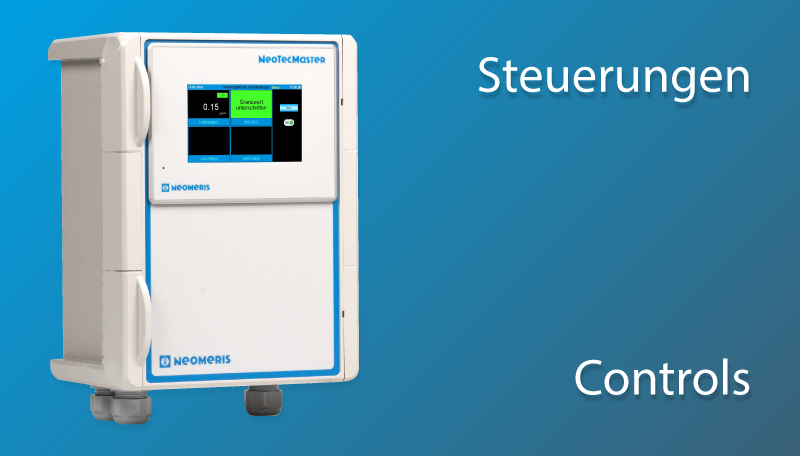NEOMERIS Ozone Destruct
Remaining catalytic ozone destructors for safe ozone depletion in vessel exhaust air
Ozone is used in water treatment as a powerful disinfectant and oxidant and is generated directly on site by "silent electrical discharge" or electrolytic water catalysis. Ozone dissolved in water for reaction with chemical constituents or microbiology is often not completely consumed. Accordingly, phase transition and outgassing occur primarily in storage or reaction tanks of water-bearing equipment. The excess ozone in the gaseous phase must be eliminated safely and effectively.
Gaseous ozone can be converted to oxygen both thermally and catalytically. Thermal ozone destruction takes place in a flow reactor at about 400 °C. This method requires heating energy and is therefore operating cost intensive. Residual thermal ozone destroyers are used primarily in the ozonation of wastewater when there are substances in the waste gas, such as volatile hydrocarbons (VOCs), nitrogen oxides or sulfur compounds, that would poison a catalytic system. The safety regulations of many countries demonstrably require ozone depletion while maintaining limits, e.g., in Germany of 120 µg/m3 (see regulations of the professional associations).
In the application case of ozonated ultrapure water systems and also for drinking water, the use of the catalytic residual ozone destroyer is possible without hesitation. Ozone is a metastable gas and decomposes releasing heat on the surface of the catalyst granules. This exothermic process transforms the ozone into oxygen, which can be readily released into the environment.
The NEOMERIS OzonDestruct series uses the reliable and widely used Carulite 200 mixed oxide catalyst. Our units are characterized by special features and design advantages for the operator:
- Carulite 200 is filled as granules in the stainless steel reactor and requires only a slight heating during the catalytic process.
- Carulite 200, like all catalyst materials, loses effectiveness when catalyst poisons, such as sulfur and halogen-containing compounds, VOCs, nitrogen oxides and metals, are present in the exhaust air.
- Moisture condensation on the catalyst granules is avoided by heating the incoming air at the reactor inlet.
- The shelf life of the granulate is unlimited. A replacement of the filling is possible without any problems when the effect on ozone depletion decreases. An ozone measurement in the vicinity of the reactor outlet is recommended.
- The reactor design allows low dynamic pressure at low space velocity.
- Reactor materials: stainless steel 1.4404/1.4435 (AISI 316L)
- Standard models up to 20 Nm3/h flow rate and extension to higher flow rates possible
- Customized special designs, e.g. with special connections, can be implemented
The main field of application of the OzoneDestruct is ozone depletion in tank venting of ozonized tanks of e.g. pharmaceutical water systems with ozone concentrations in the lower ppb range up to approx. 100 ppb
The devices are designed as follows:
- Reactor housing stainless steel DN 80 (surface outside Ra< 0.80 µm, weld seams ground)
- TriClamp connections according to DIN 32676 DN 50 for the air inlet and exhaust air (other connections on request)
- Flow internals and droplet separators
- Carulite 200 catalyst granules
- Electric trace heating at the air inlet
Models on request!
The documentation includes the test certificates and certificates on metallic and non-metallic materials customary for the pharmaceutical water sector.




